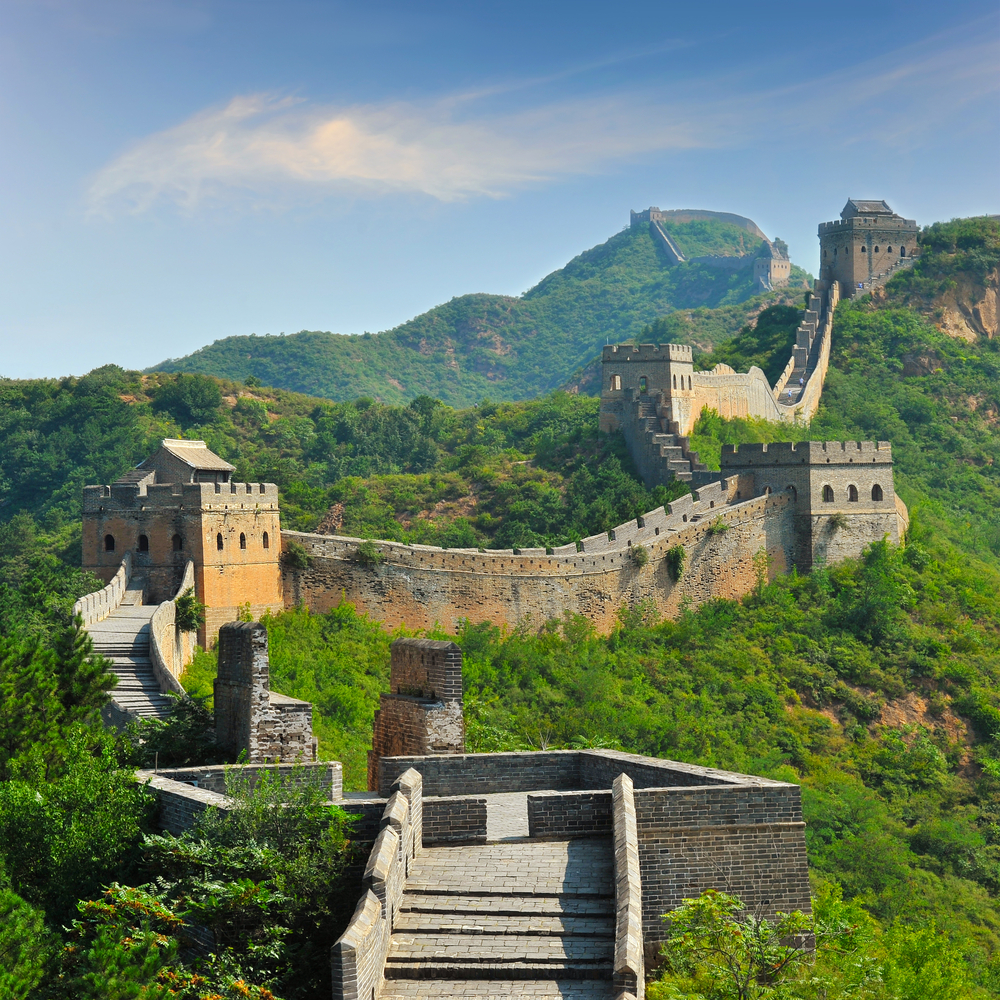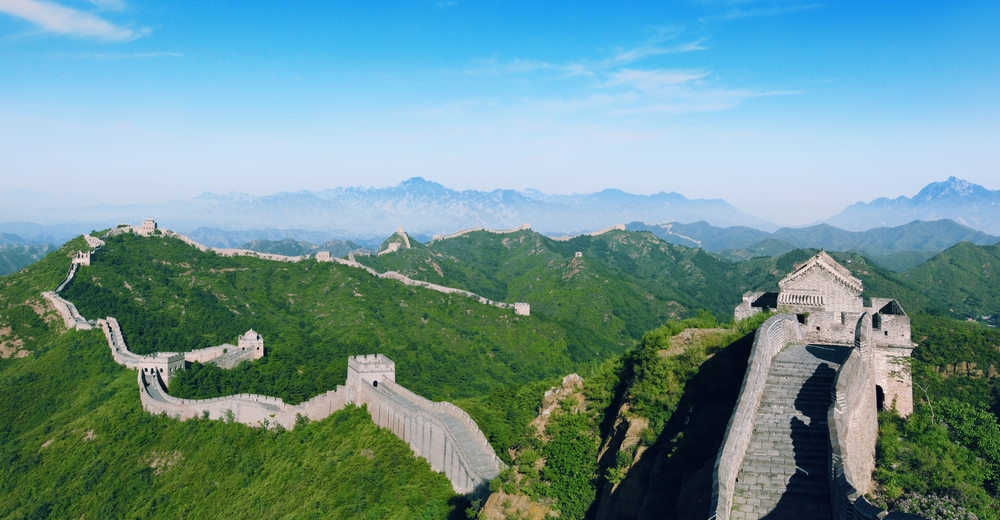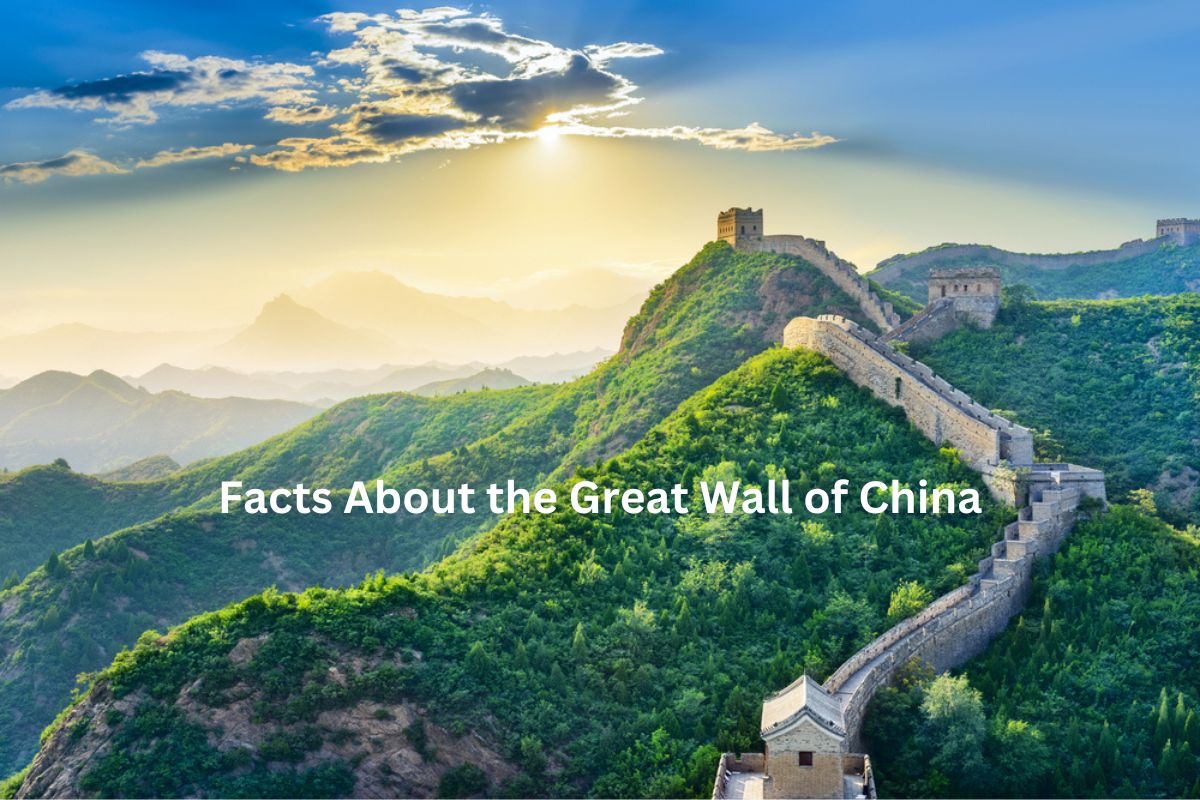The Great Wall of China, stretching over 13,000 miles, stands as an iconic symbol of China’s historical strength and perseverance.
Originating in the 7th century BC, this intricate defense system, built across various dynasties, primarily served to deter invaders.
Composed of walls, watchtowers, barracks, and fortresses, its construction materials varied by region, from tamped earth to bricks. Beyond defense, it played roles in trade regulation along the Silk Road and symbolized the enduring spirit of the Chinese civilization.
Today, while some sections remain robust tourist attractions, others face threats of erosion and human activity, underscoring the importance of its preservation.
Great Wall of China Facts
1. Stretches over 13,000 miles
The Great Wall is not a single continuous structure but a collection of walls, trenches, and fortifications that span approximately 13,000 miles (21,196 kilometers) from east to west of China. It covers diverse terrains, from mountains and plateaus to deserts.
2. Began in the 7th century BC
While the most famous sections of the Great Wall were built during the Ming Dynasty, its history starts much earlier.
Also Read: Facts About Ancient China
During the Warring States period (475-221 BC), individual Chinese kingdoms built defensive walls to fend off invasions from rival states.
These early sections laid the groundwork for what would eventually become the Great Wall.

3. Ming Dynasty built the most-known sections
The Ming Dynasty (1368–1644 AD) is responsible for much of the wall’s construction that remains today. They reinforced, expanded, and built new sections of the wall to defend against potential invasions, especially from the Mongols to the north.
4. More than just a wall, includes towers and barracks
While often thought of as just a wall, the Great Wall system is far more complex. Throughout its length, there are watchtowers for surveillance, barracks for housing troops, garrisons for local command, and fortresses for larger scale defenses. These structures made the wall an integrated military defensive system.
5. Built from earth, wood, bricks, and stones
Depending on the region and resources available, different materials were used in the wall’s construction. In the vast deserts, tamped earth was often the primary material. In mountainous regions, stones were more commonly used.
The Ming Dynasty introduced bricks as a primary building material, which made the wall sturdier and longer-lasting.
6. Not visible from space with the naked eye
A popular myth suggests that the Great Wall is visible from space. However, due to its narrow width and the colors that blend with the natural terrain, it’s challenging to see from orbit without aid.
Astronauts have confirmed that the Wall isn’t visible to the naked eye from space, though it can be seen using telescopic lenses.

7. Used for defense and regulating Silk Road trade
While the primary purpose of the Great Wall was defense against potential invasions, it served other purposes too. The wall played a crucial role in the regulation of trade and the imposition of duties on goods transported along the Silk Road. It also facilitated the control of immigration and emigration.
8. Many parts are in ruins; some restored for tourism
Over the centuries, the Great Wall has faced natural degradation due to factors like erosion, as well as human activities that have led to its deterioration.
Notably, various parts have crumbled away, leaving segments in ruins. In the modern era, there have been restoration efforts, especially in tourist-frequented sections like Badaling, to both preserve the Wall’s history and cater to global visitors.
9. Symbolizes Chinese strength and civilization
For many, the Great Wall is not just an architectural marvel but also a symbol of China’s enduring strength, willpower, and the continuity of its civilization. It stands as a testament to the nation’s ability to organize massive construction projects spanning various dynasties and rulers.
10. Designated a UNESCO World Heritage site in 1987
Recognizing its immense historical, cultural, and architectural significance, UNESCO added the Great Wall to its list of World Heritage Sites in 1987. This designation underscores its global importance and encourages preservation efforts.

11. Parts torn down during the Cultural Revolution
The Cultural Revolution (1966-1976) was a period of significant upheaval in China. During this time, certain sections of the Wall were dismantled. Bricks were repurposed for building homes and other structures, as there was an emphasis on modernization and a devaluation of historical relics.
12. Many sections are endangered
Beyond the natural wear and tear over time, the Wall faces threats from human activities. This includes vandalism, unsupervised tourism, and nearby construction projects. As a result, many sections are in a state of disrepair and could be lost if not protected and restored.
13. Badaling near Beijing is the most visited section
As one of the best-preserved parts of the Great Wall, Badaling is also the most popular among tourists. Located near Beijing, it was the first section to be opened to tourists in 1957 and has since welcomed millions of visitors from around the world.
14. There’s a marathon race on the Wall
The Great Wall Marathon is an annual racing event that offers participants the unique experience of running on this ancient structure. However, the race is quite challenging due to the steep inclines, countless steps, and the varying condition of the Wall.
15. Close to the Ming Tombs, burial place of 13 emperors
Located near a section of the Wall is the Sacred Way leading to the Ming Tombs, which are the mausoleums of 13 Ming Dynasty emperors. The choice of this burial site, surrounded by mountains and the Wall, was strategic, focusing on its natural defenses and the principles of Feng Shui.
